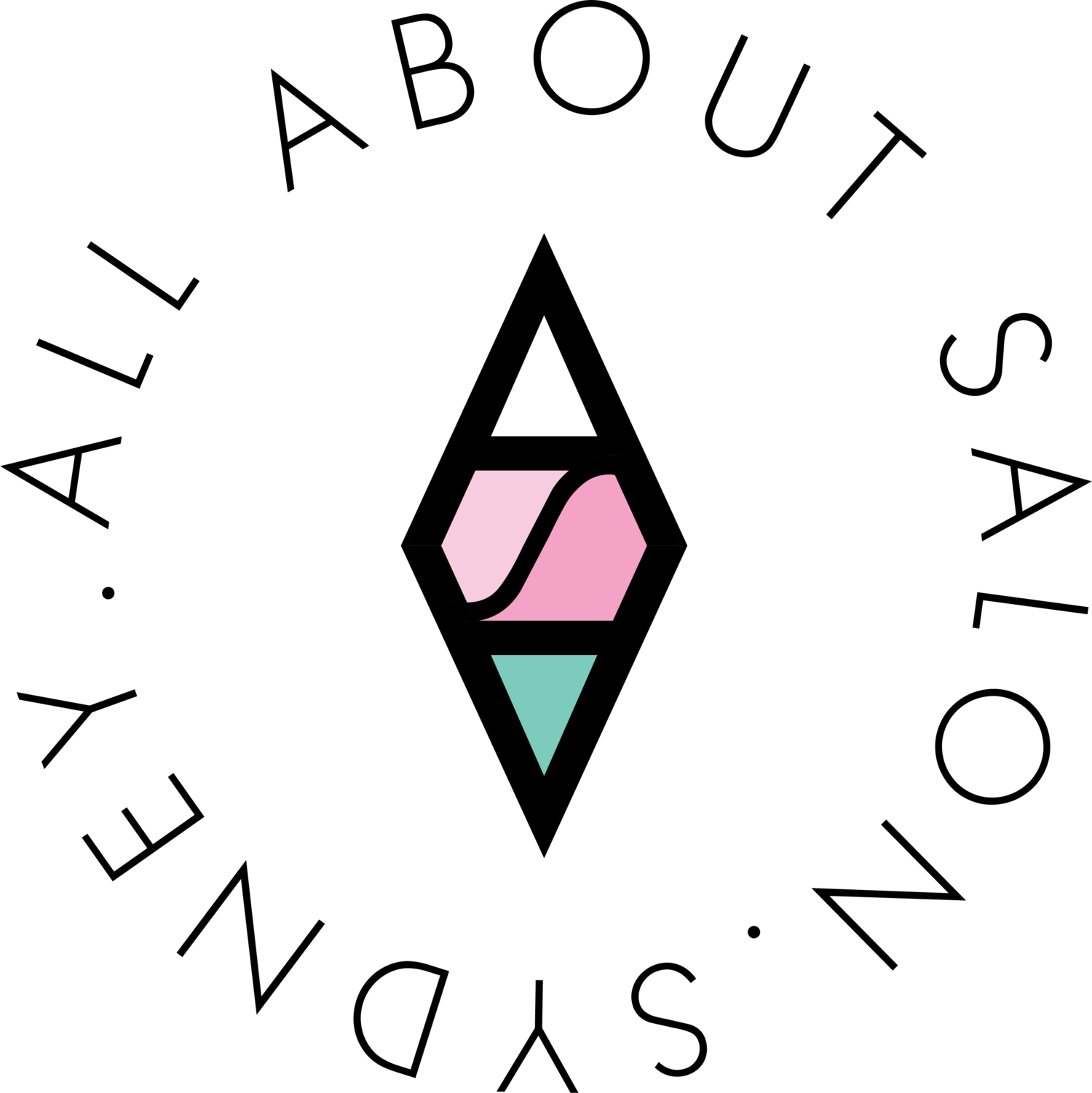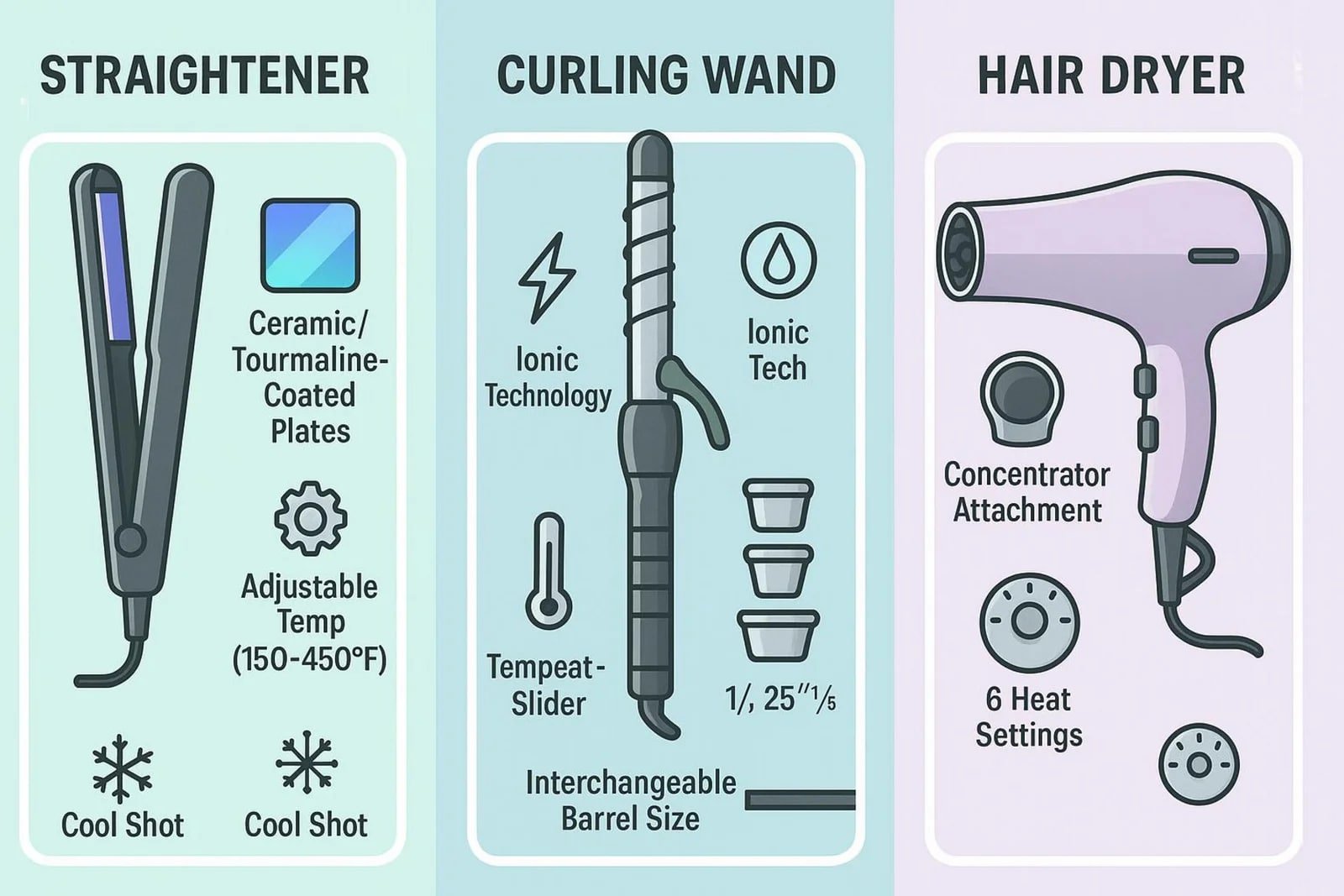Heat Styling 101: How to Protect Your Hair from Damage
Most of us rely on heat styling tools for our daily looks. Straighteners, blow dryers, and curling wands help create smooth, bouncy, or curly hair-but too much heat can leave hair dry and damaged. So how can you keep your hair healthy while still enjoying your favorite styles? The answer is to understand how heat affects your hair, use safe styling habits, pick the right tools, and care for your hair regularly. It’s all about finding the right balance and knowing how to protect your strands.
Why does heat damage hair during styling?
Heat styling works by changing your hair’s natural structure. Hair consists of layers: the cuticle (outer layer), cortex (inner layer with strength and shape), and medulla, all held together by proteins like keratin. Too much heat breaks down these parts.
How heat damages hair
Heat from styling tools can change your hair’s proteins, especially keratin. For example, at temperatures over 150°C, the alpha-keratin in your hair turns into beta-keratin, making strands weaker (a bit like how an egg changes when it’s cooked and can’t go back). Even higher temps, above 230°C, can burn hair and break the bonds that give it shape, bounce, and strength. This leaves your hair weaker and more likely to break. Other things like rough brushing, chemicals, and UV rays from the sun can also wear down hair over time.
Are some hair types more at risk?
Yes, just like some people get sunburn quicker, some hair types are easily damaged. Fine hair needs lower heat. Previously colored, bleached, permed, or relaxed hair is already weakened by chemicals, so it’s more fragile. Curly and coily hair can also break and dry out faster from heat because oils move slowly down the curl and these hair types lose water quicker. Knowing your hair’s texture, history, and even age (older hair is often finer) helps you choose safe heat settings.
How to recognize heat-damaged hair
Heat damage isn’t always easy to spot at first. If you learn to recognize the early signs, you can change your habits before harm gets worse.
Signs of damaged hair
Healthy hair looks shiny, feels soft, and stretches a bit before it snaps. After too much heat, hair often:
Loses shine and looks dull
Feels dry and rough
Breaks easily, not just at the ends
Has many split ends
Tangles more often
Frizzes more due to raised cuticles and lost moisture
Does heat damage show up differently on various hair types?
Yes. On straight hair, watch for limpness, lots of split ends, and flyaways. Damaged wavy hair often looks fuzzy and loses its wave definition. Curly and coily hair may lose its curl pattern, bounce, and get dry and frizzy, making it harder to care for. Adjusting your routine to your hair’s texture helps you recover from and avoid further damage.
Tips to lower heat styling damage
Once hair is damaged, it can’t truly fix itself. That’s why preventing damage is easier than trying to repair it. Here are simple steps to help your hair:
How to get ready before heat styling
Start with washed, conditioned hair.
Use moisturizing shampoo and conditioner for extra hydration.
Gently squeeze out water with a towel instead of rubbing.
Divide hair into sections so you can style it evenly with fewer passes.
Why you should style only dry hair
Never use hot tools like straighteners or curling wands on wet or damp hair (unless it’s a special wet-to-dry device). Water inside hair can heat up quickly, boil, and cause bubbles in the strand, leading to splits and breaks. Always let hair dry fully (by air or with a dryer) first.
Why heat protectants matter
Heat protectants are like sunscreen for your hair-they form a shield that cuts down on moisture loss and spreads out the heat more evenly. Use a spray or serum on your hair before every round with a heat tool. Look for products with silicone or hydrolyzed wheat protein.
How often should you use heat tools?
Try not to style with heat daily. Limit usage to every other day or a few times a week. On rest days, wear your natural texture, try braids, buns, or use dry shampoo. This gives hair time to stay strong and recover.
Which temperature is right?
Go as low as possible on the temperature setting. Fine, colored, or damaged hair only needs about 150-170°C. Thicker, coarser hair can take up to 180-200°C. Test to find the lowest setting that still does the job and avoid multiple passes with the tool.
How trims can help
Regular trims chop off the weakest, split ends before they can climb higher up your hair. A trim every 6-8 weeks (or up to 10-12 for thick hair) keeps damage in check and helps your hair look and feel healthier.
Picking the right tools to protect your hair
Some tools are gentler on your hair than others. Look for tools with features designed to reduce harm.
What to seek in a straightener
| Feature | Benefit |
|---|---|
| Ceramic plates | Even heating, fewer hot spots |
| Tourmaline plates | Releases negative ions, smooths frizz, seals in shine |
| Adjustable temperature | Lets you pick safest setting for your hair |
| Floating plates | Adjusts to section thickness-less pulling |
Hair dryers: safer options
Look for dryers with:
Variable heat and speed settings (use low heat and slow speed)
A cool shot button-helps set style and lock cuticles
Attachments like concentrators or diffusers for better control
Ionic technology (fast drying, less frizz)
Keep the dryer about 15-20 cm from your hair and aim the airflow down for a smoother finish.
Best curling wand features
| Barrel Material | Benefit |
|---|---|
| Ceramic | Heats smoothly, less harsh |
| Tourmaline | Gentle, helps seal moisture |
| Minerals added | Locks in hydration (e.g., sericite) |
Match the barrel size to your hair length. Use smaller barrels for short hair and big ones for longer hair or bigger curls. Adjustable heat is a must-use the lowest setting that works. Section hair, work quickly, and never style damp hair.
No-heat and low-heat styling ideas
You don’t always need heat to get a great look. Here are some alternatives:
Popular no-heat styling options
Braid hair overnight for waves or curls depending on braid type
Use foam or bendy rollers for curls
Make pin curls with bobby pins
Scrunch wavy or curly hair and air dry, or use a diffuser on a cool setting
Try updos, twists, buns, or ponytails
Tips to make styles last longer
Spray dry shampoo to refresh hair and absorb oil
Sleep on a satin or silk pillowcase to reduce friction and frizz
Wear a loose braid or “pineapple” style overnight to maintain waves or curls
Avoid touching your hair too much-the less you fuss, the longer your style lasts
What to do if your hair is already heat damaged
Noticing damage? While you can’t undo it, you can help your hair look and feel better and stop new damage from happening.
Can you heal heat-damaged hair?
Hair isn’t alive, so it can’t repair itself like skin. Once the structure is changed, it stays that way-but you can soften the feel, add moisture, and make hair look healthier until new, stronger hair grows out. Your goal is to restore softness and prevent more breakage.
Moisture and protein treatments
Use deep conditioners with lots of moisturizing ingredients-these make hair softer and smoother
Treat hair weekly for best results
Apply leave-in conditioners to protect and hydrate all day
Helpful hair products
Look for products labeled for damaged hair. These contain proteins (like keratin or hydrolyzed wheat protein) that fill in gaps and strengthen hair. Good natural options include coconut oil, argan oil, shea butter, and aloe vera-these seal in water and help reduce future splitting. Use gentle, moisturizing shampoos and conditioners. Curly or coily hair may need richer formulas for the best results. And don’t forget your scalp-a healthy scalp means healthier growth.
Should you cut off damaged sections?
If your hair breaks often, feels mushy when wet, or has lots of splits that keep going higher, the best option is to cut away the damaged parts. Removing the weakest parts lets new, stronger hair grow without ongoing problems.
FAQs about heat styling and hair safety
Here are a few common questions:
Is it okay to use heat protectants every day?
Yes, most heat protectant sprays or serums are made for daily use and don’t build up on the hair. If you use a heavy serum, though, you might need to wash your hair more often. Lightweight sprays work well for everyday use.
How soon does hair “recover” from heat damage?
Damaged hair can’t “heal,” so the harmed section will stay as it is until you cut it. With care and treatments, hair may look and feel better, but only new growth will be undamaged. Give it time, stay consistent, and protect new hair as it grows.
Why does my hair get damaged even at lower heat?
Low heat can still hurt delicate, fine, or already weak hair. Damage can also happen if the tool is left too long on one area or used over and over on the same spot. No matter the setting, always use a heat protectant and check your hair’s condition in advance.
Simple tips for healthy hair with heat styling
Let’s wrap up with the main tips:
Always use a heat protectant before any hot tool touches your hair
Make sure hair is totally dry before using straighteners or curling wands
Pick tools with adjustable heat and use the lowest setting possible
Don’t style with heat every day-give your hair regular breaks
Section hair and use tools quickly to avoid repeated passes
Trim regularly to keep splits from getting worse
Deep-condition often and eat a healthy diet for overall hair strength
Remember, the goal is to protect the smooth cuticle for shiny and healthy hair. Use heat mindfully and you can keep your hair looking great while preventing damage.
Do you live in Sydney?
Get the perfect look at our salon – schedule your appointment now!
Our Services
Check Out Our Instagram
Check out our instagram
Check out our instagram and see our latest posts!
Check out our facebook
Check out our facebook and see our latest
posts!













